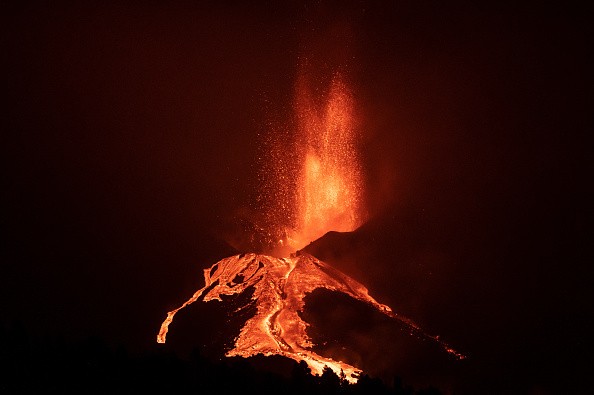Officials say a volcano on the Spanish island of La Palma that has been erupting for the past five weeks is more active than it has ever been.

La Palma Volcano
Officials warned on Monday that a volcano that has been erupting for the past five weeks on the Spanish island of La Palma is more active than ever, after fresh lava flows triggered by a partial collapse of the crater threatened to cover previously untouched regions.
Early on Monday, a massive fresh flow of molten rock burst from the Cumbre Vieja volcano.
A researcher at the institute, Pedro Hernández, told public broadcaster RTVE, "We're in a new phase, which is much more intense."
A volcanic ash cloud rose high over the island off the coast of northwest Africa as a result of the eruption. Residents waited to see which way the fresh lava flow would go, while officials prepared to evacuate even more people.
Also Read: La Palma Volcanic Eruption Persists With Its Resulting Effects Felt From Above and Below
Impacts of the Volcano
Despite the fact that the lava has completely or partially destroyed almost 2,000 buildings, predominantly homes, and covered more than 900 hectares (2,200 acres) of agricultural farmland, immediate evacuations have so far prevented any fatalities from the eruption.
In the last five weeks, almost 7,500 of the island's 85,500 residents had been forced to relocate. Authorities said the rivers of lava sliding down the mountain are up to 3 kilometers (almost 2 miles) wide.
Over the weekend, new cracks and side vents opened up around the volcano's slopes, allowing more molten rock to escape.
The Atlantic Ocean has already been reached by one of the main lava rivers. Another came to a standstill when it approached a densely populated seaside area.
Scientists counted almost 800 earthquakes of various magnitudes on La Palma last week, the majority of which were not noticed by locals. The most powerful had a magnitude of 4.9.
Though the eruption has so far had little effect on the majority of the island, areas of the western side, where lava fields are developing, face an unclear future.

Government Intervention
On the island of La Palma, where part of the volcano's cone collapsed as red hot lava continued to flow, Prime Minister Pedro Sanchez said Spain will step up help to the hard-hit agriculture and fishing businesses.
Sanchez said during his sixth visit to the island since the eruption began that they are going to make a budgetary revision at the cabinet meeting next Tuesday to speed up the arrival of economic resources for both the Employment Plan and help for the whole agriculture and fishing sector.
Sanchez promised 206 million euros ($239 million) in government support for the island's infrastructure, agriculture, and tourism in early October.
Part of the main cone fell on Saturday morning, according to the Canary Islands Volcanology Institute. It shared a video of the volcano's heavy ash clouds rising.
Some of the island's banana plantations, which account for almost half of the island's economic production, have been destroyed by the eruption.
Sanchez praised everyone who is helping to contain the eruption, which has so far resulted in no fatalities.
Related Article: La Palma Volcano: 'Real Lava Tsunami' Moved Towards Atlantic Coast as Earthquake Intensified Eruption
For more news, updates about volcanic eruption and similar topics don't forget to follow Nature World News!
© 2025 NatureWorldNews.com All rights reserved. Do not reproduce without permission.





